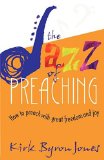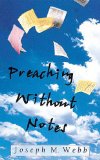How to Preach a Text With a List
The Brand New Biblical Preaching blog has an interesting post up on How to preach a text with a list in it. This is actually a helpful post. I encourage you to go over and read it. I especially like this point:
How to Preach a Text With a List Read MoreSecondly, within the list, notice the places of emphasis. These are almost always the start and end, as well as the middle on some occasions (especially if the structure is clearly chiastic). Notice any repetition of terms, or clustering of concepts.





